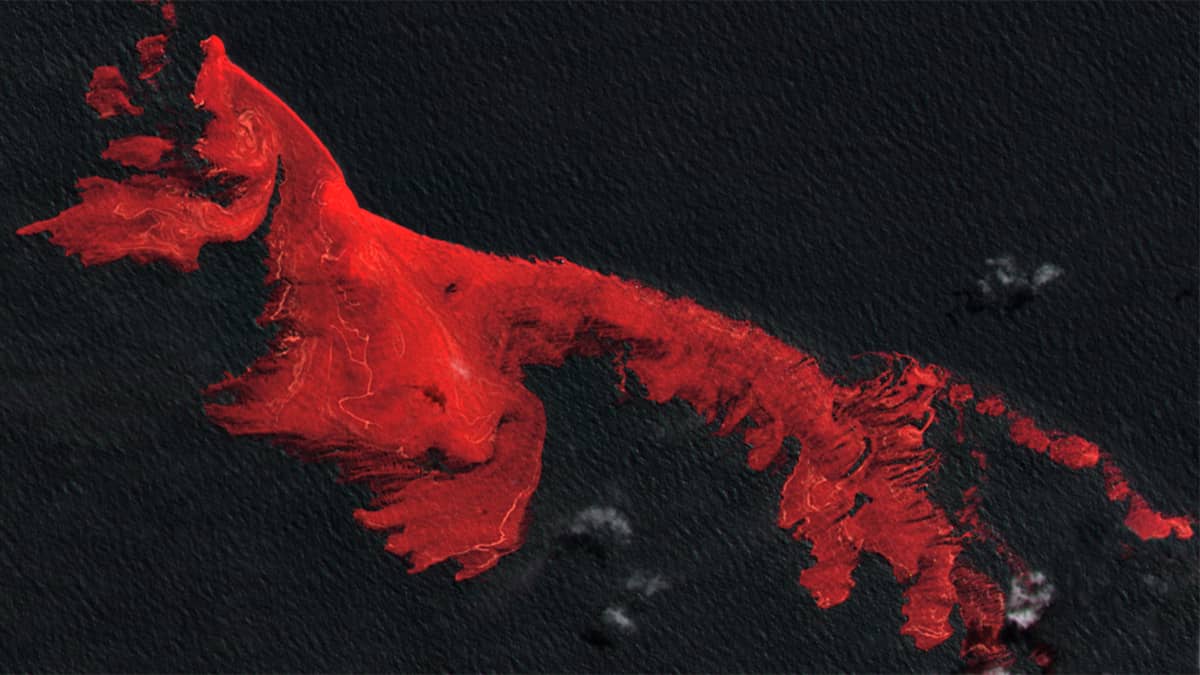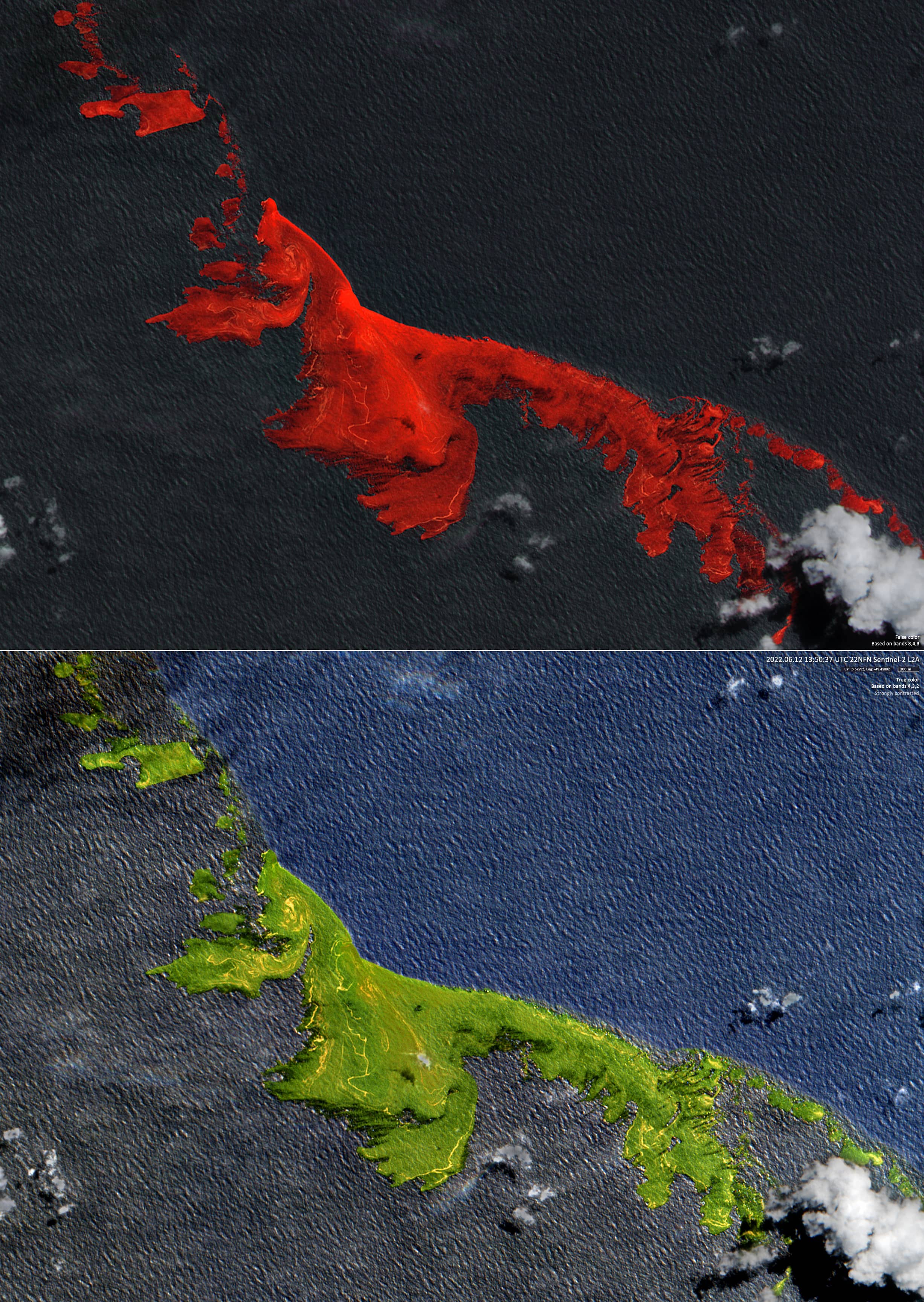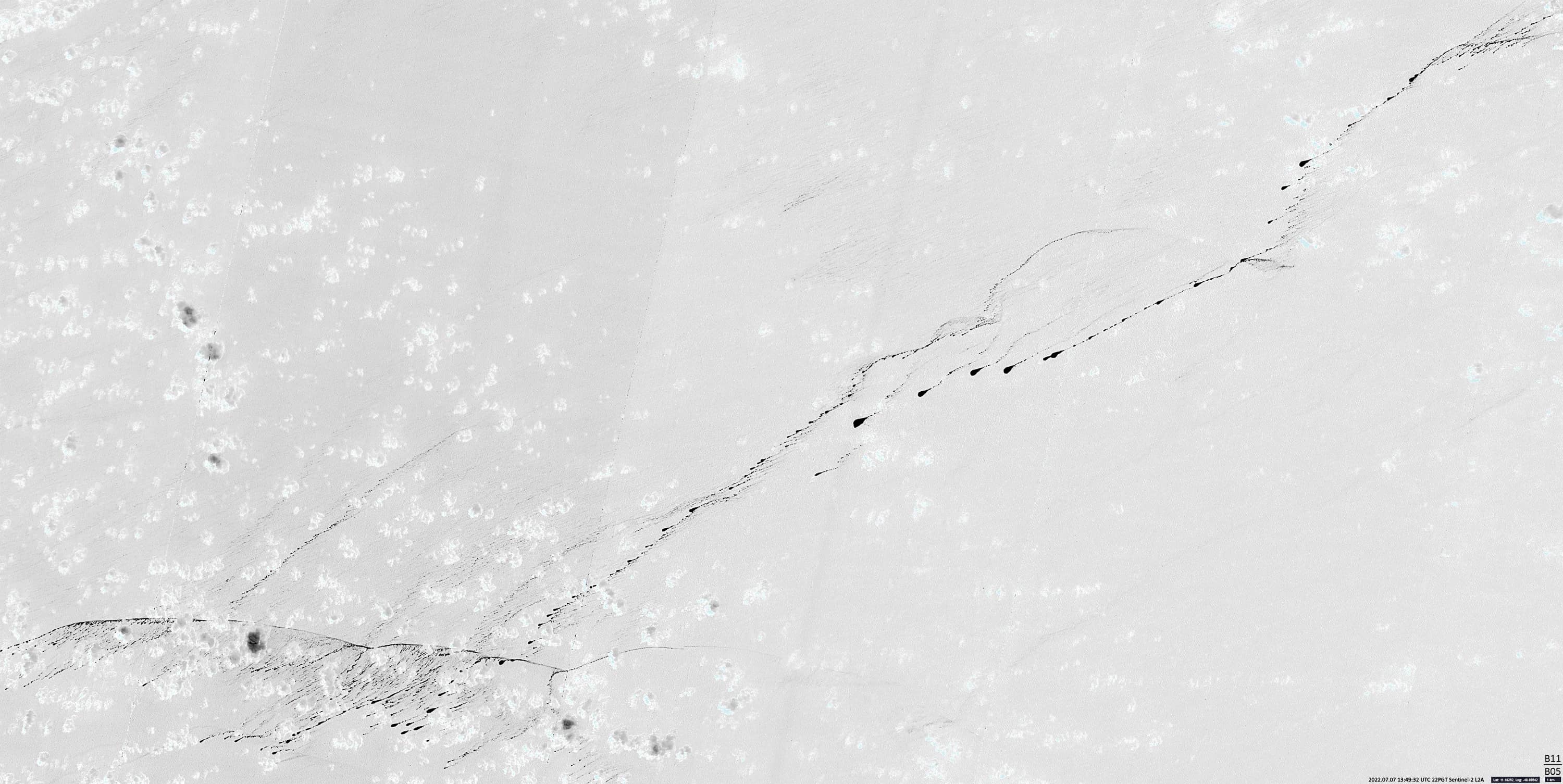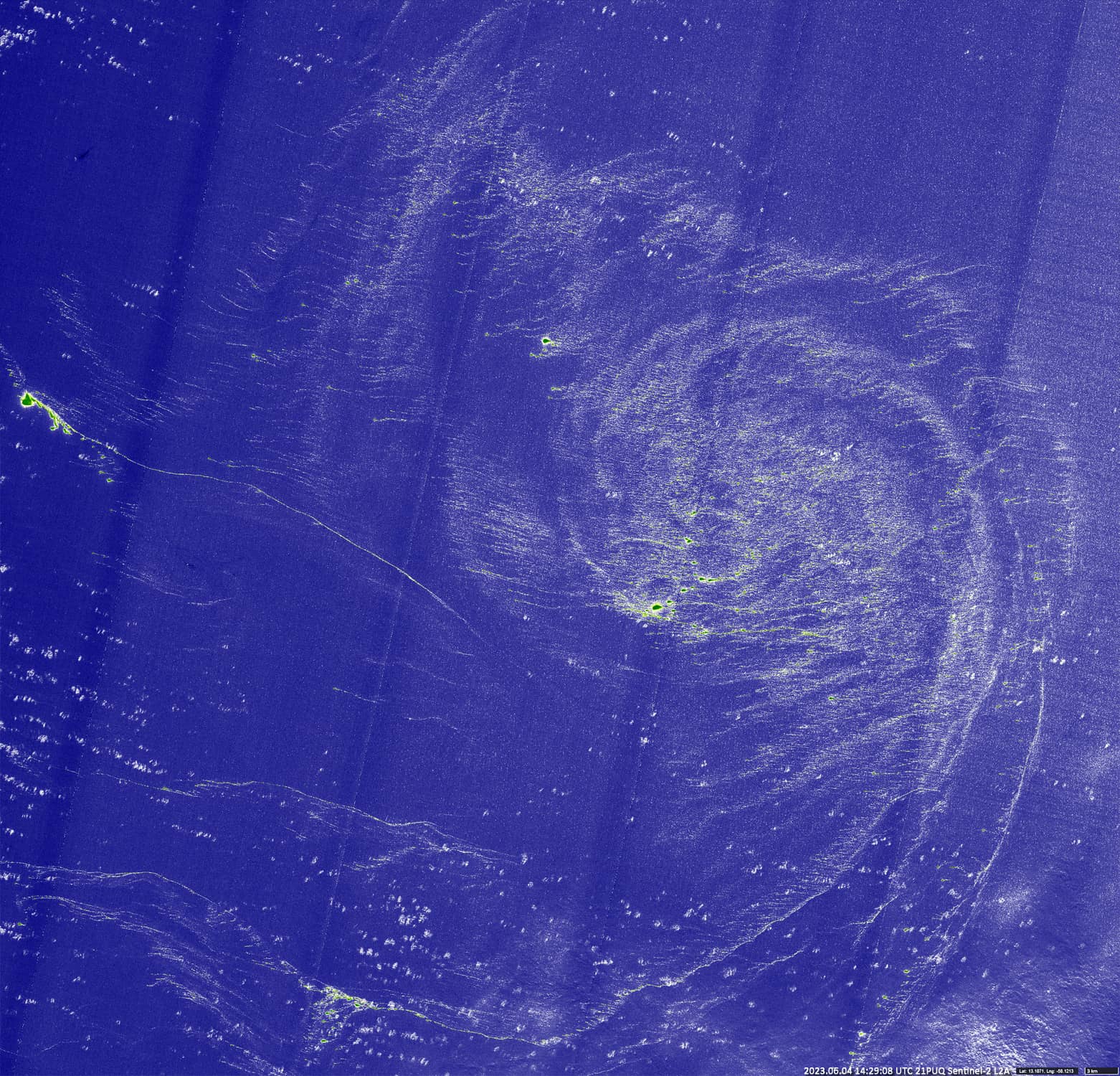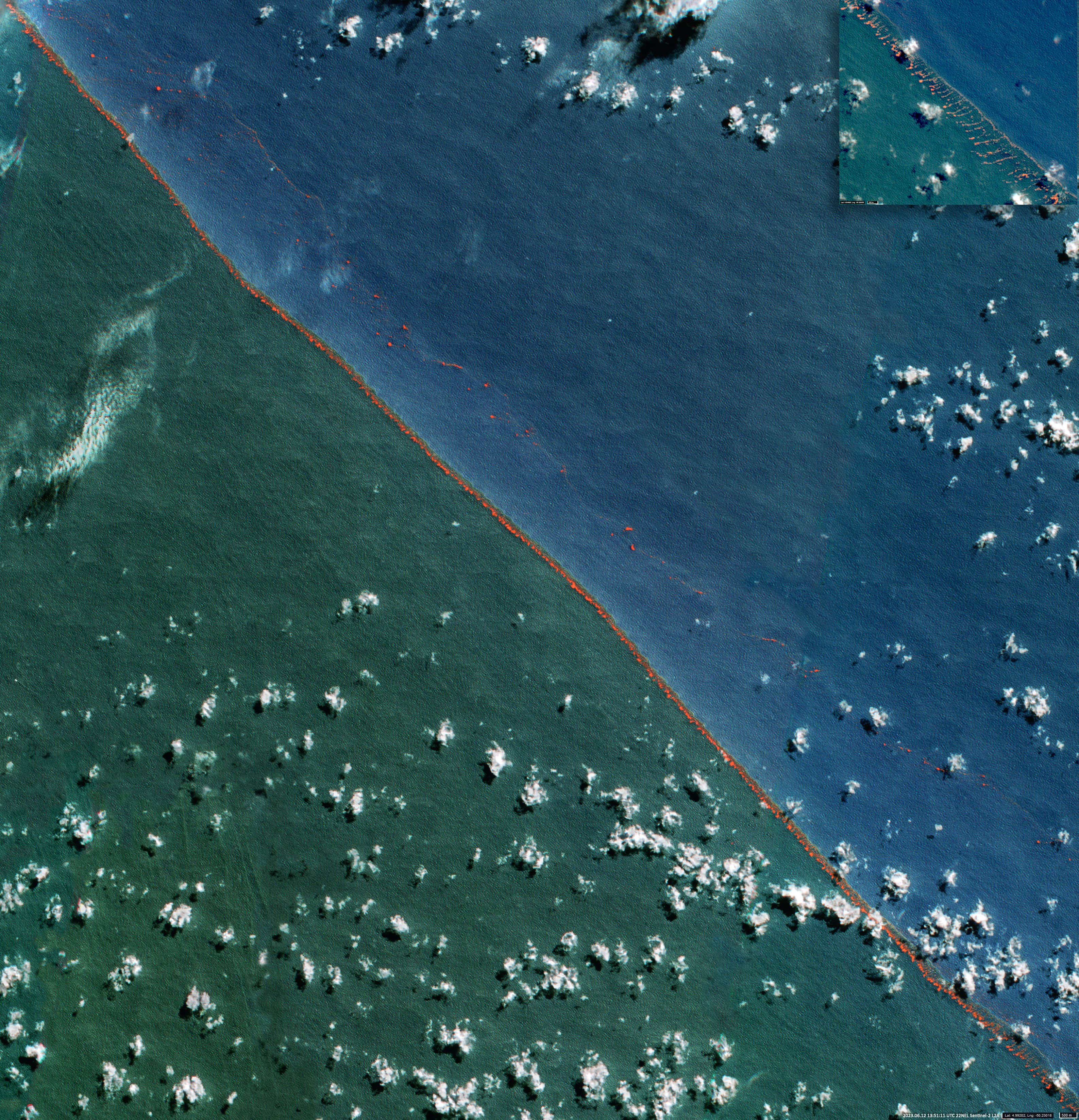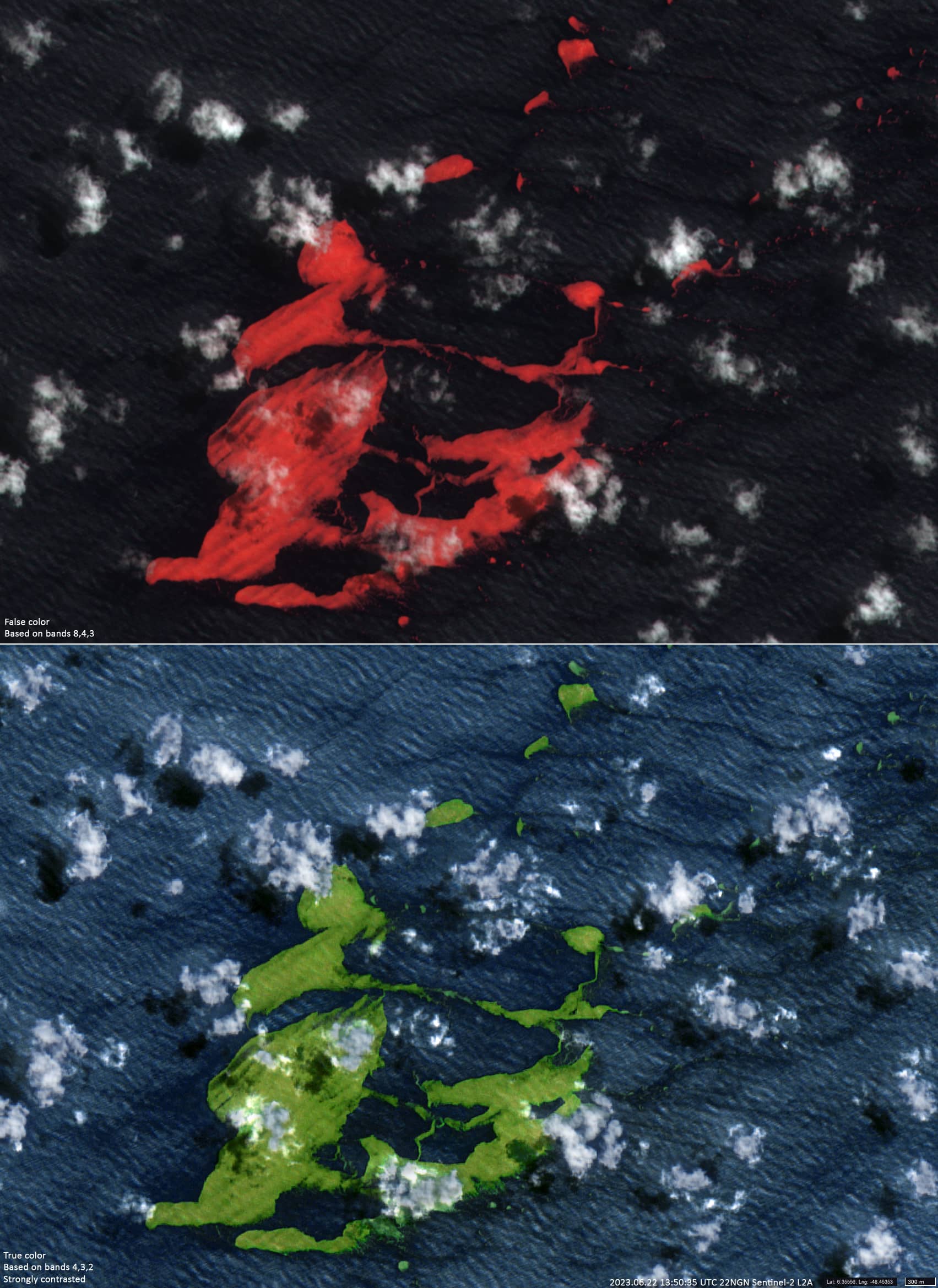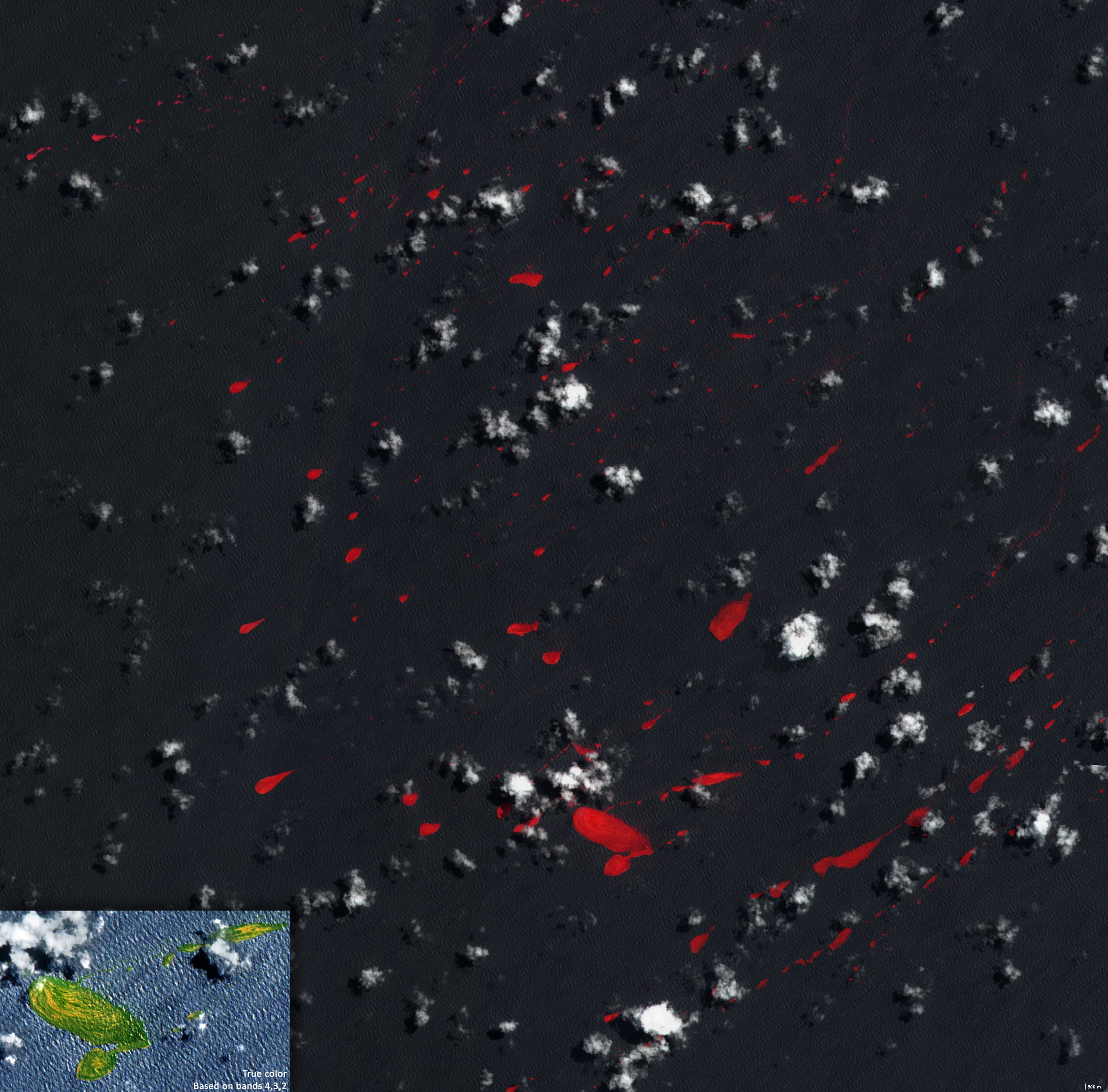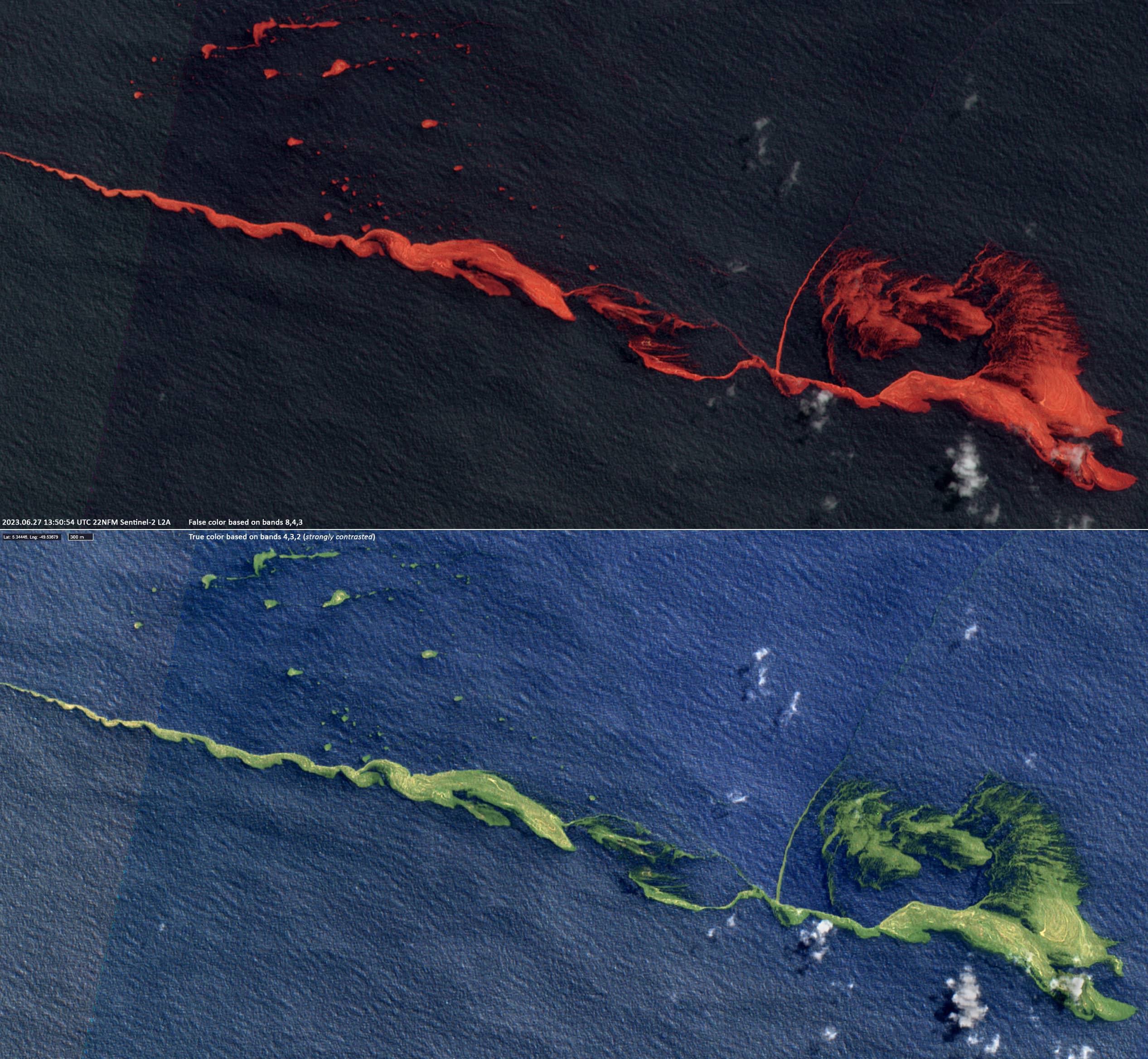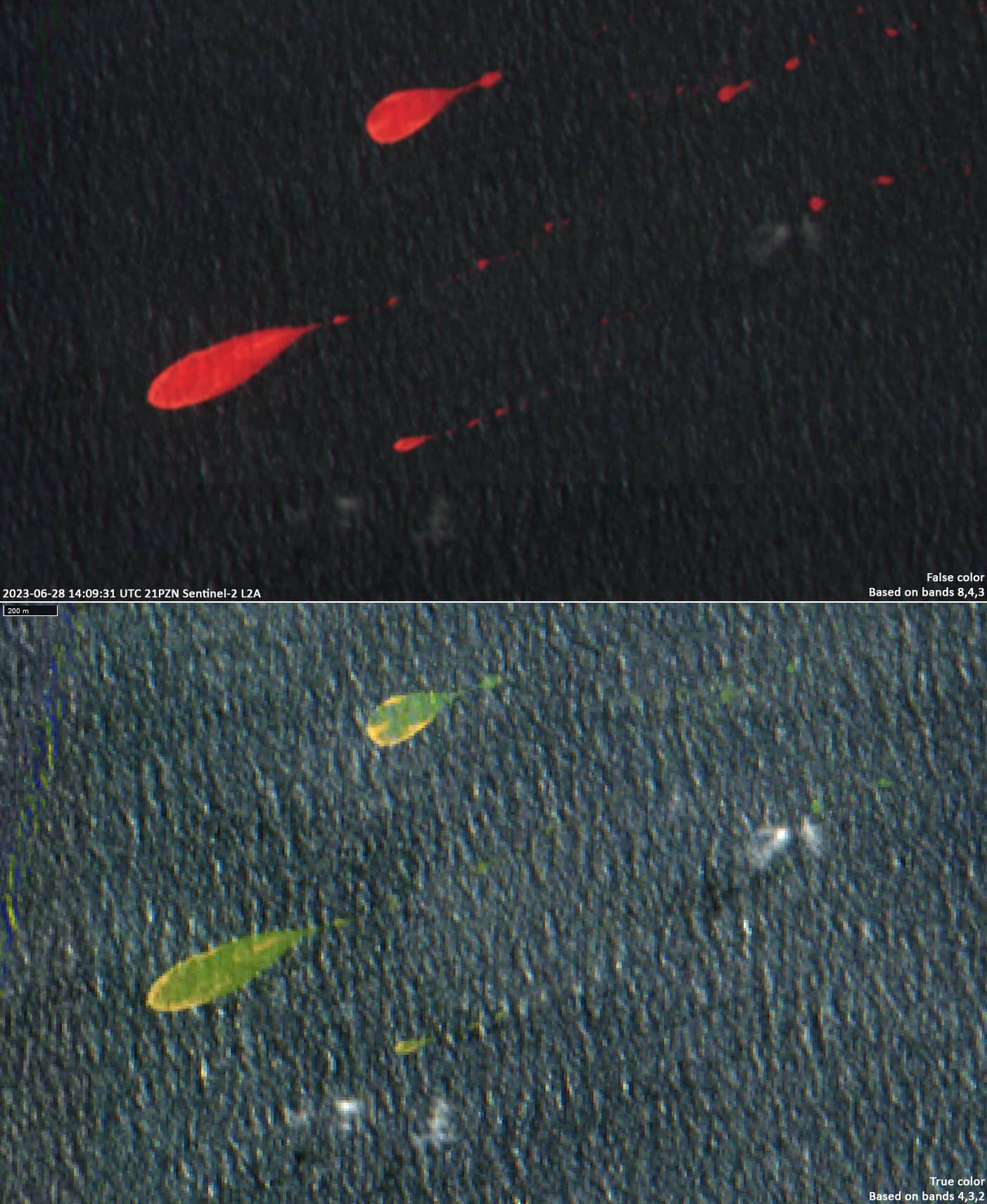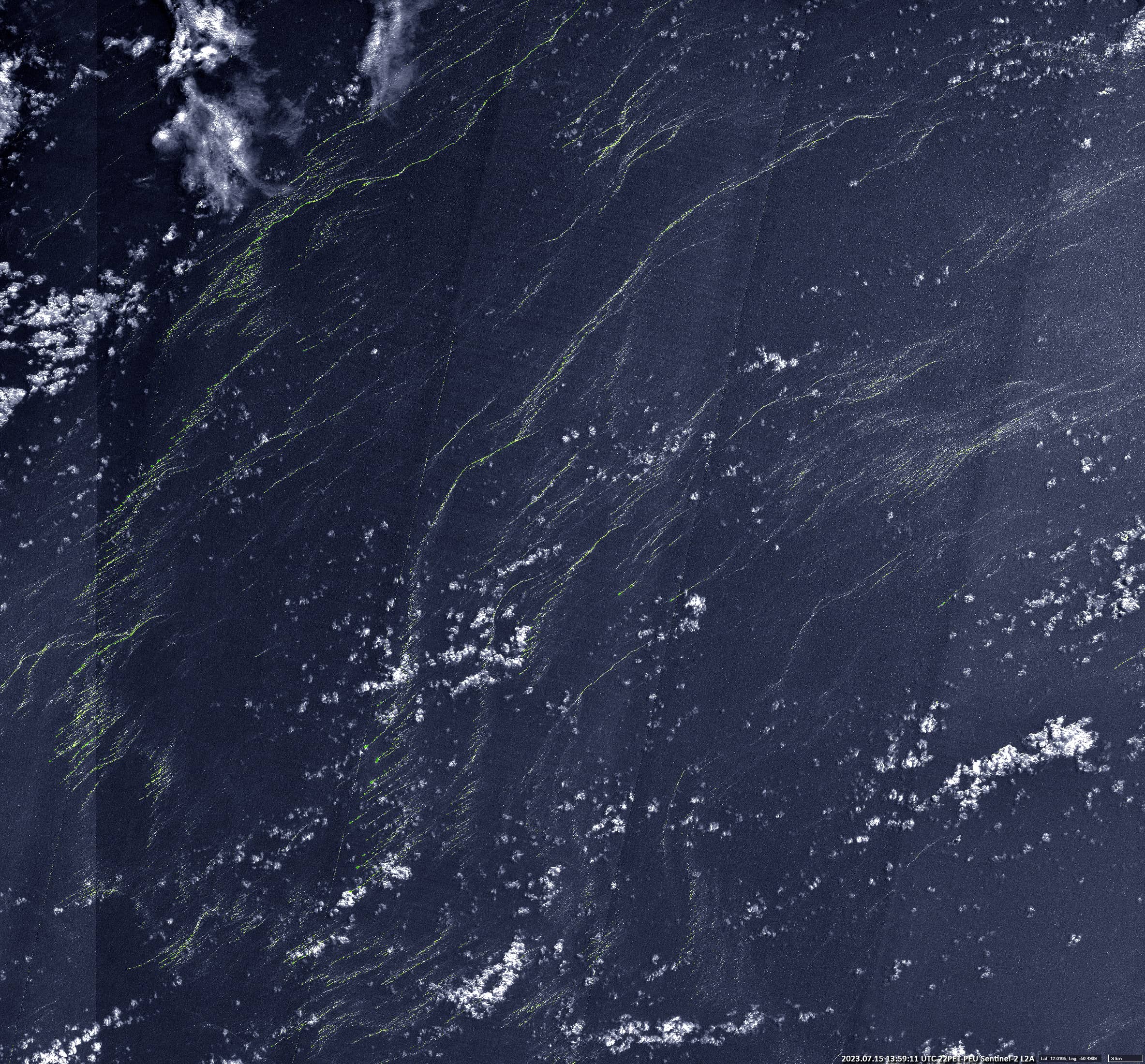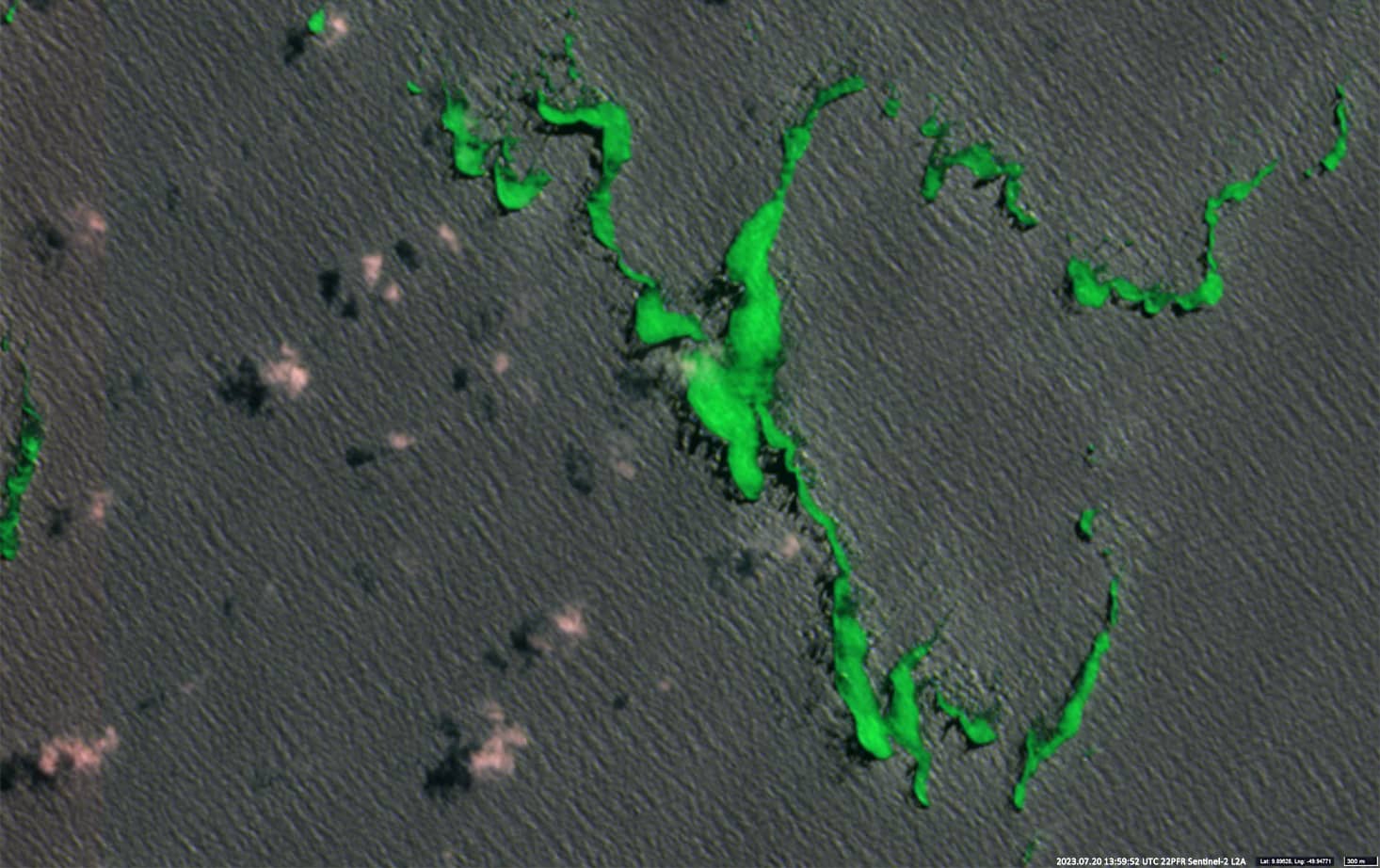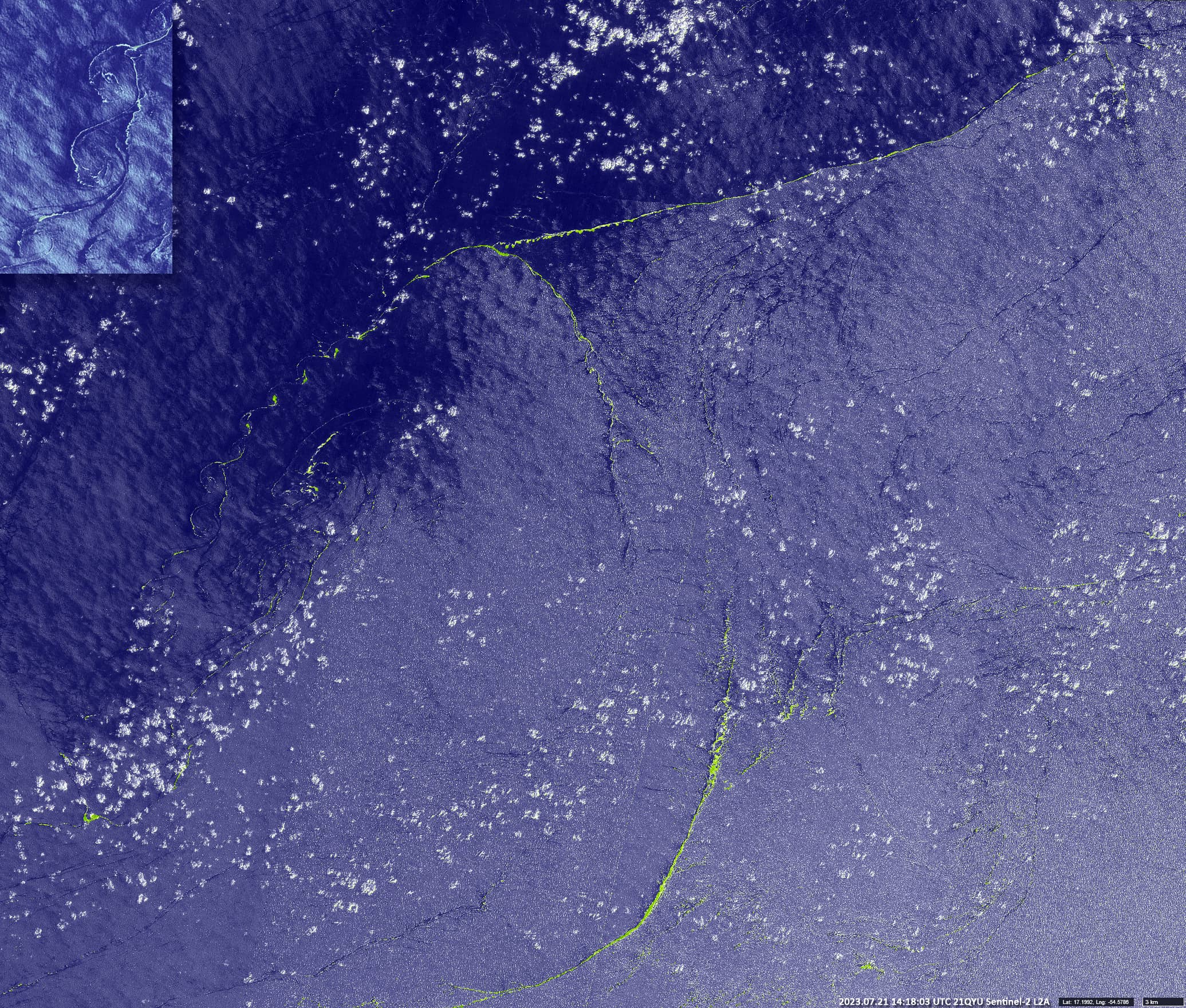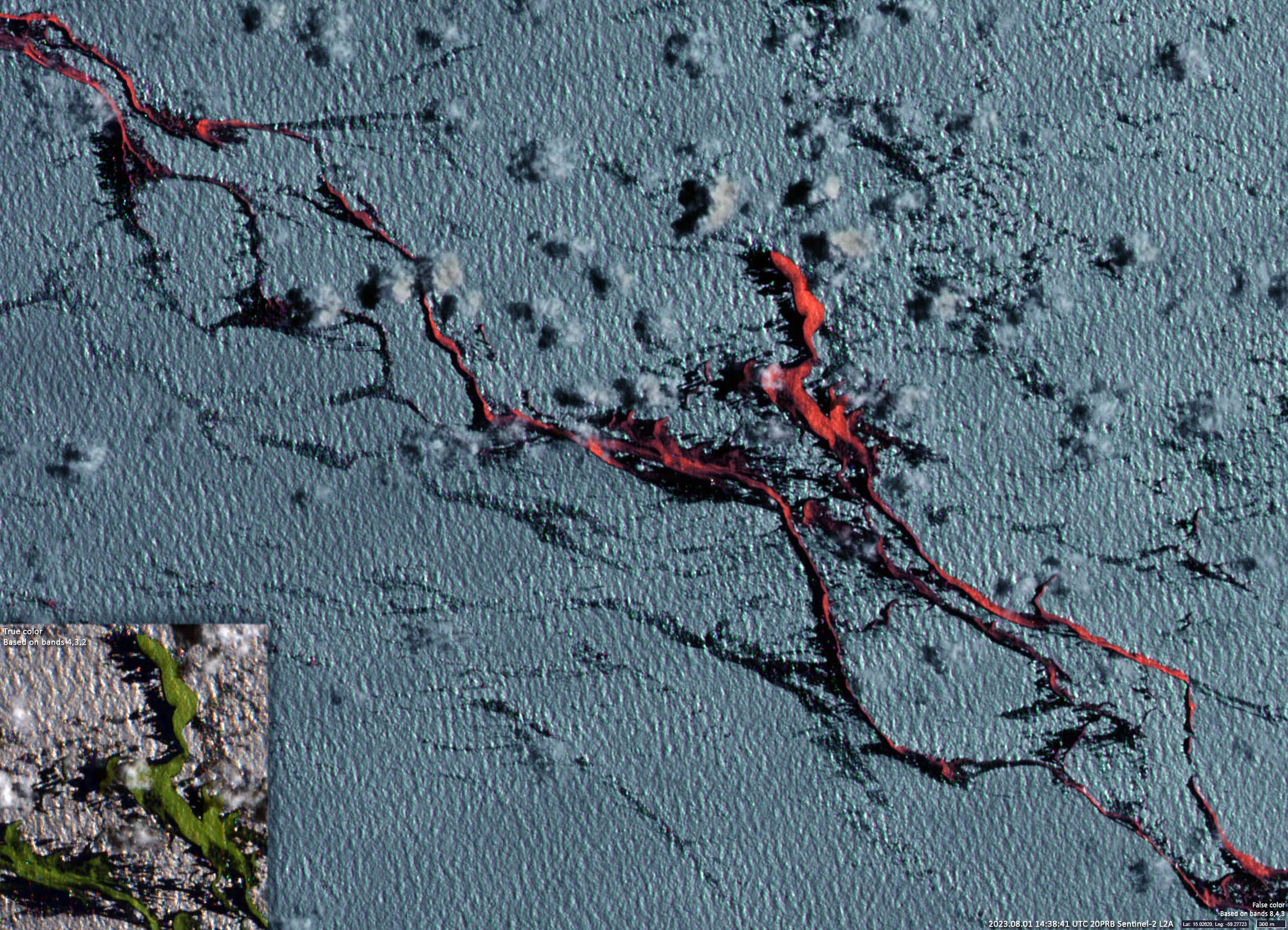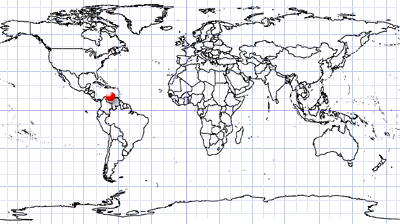
Sargassum algae in the equatorial western Atlantic
Central Atlantic Ocean
- June 12th, 2022 | 13:50:37 UTC (Fig. 1)
- July 7th, 2022 | 13:49:32 UTC (Fig. 2)
- June 4th, 2023 | 14:29:08 UTC (Fig. 3)
- June 12th, 2023 | 13:51:11 UTC (Fig. 4)
- June 22nd, 2023 | 13:50:35 UTC (Fig. 5)
- June 23rd, 2023 | 14:09:29 UTC (Fig. 6)
- June 27th, 2023 | 13:50:54 UTC (Fig. 7)
- June 28th, 2023 | 14:09:31 UTC (Fig. 8)
- July 15th, 2023 | 13:59:11 UTC (Fig. 9)
- July 20th, 2023 | 13:59:52 UTC (Fig. 10)
- July 21st, 2023 | 14:18:03 UTC (Fig. 11)
- July 24th, 2023 | 13:40:19 UTC (Fig. 12)
- August 1st, 2023 | 14:38:41 UTC (Fig. 13)
Sensor: Sentinel-2 L2A
Coordinates: 6.6°N, 49.5°W; 11.2°N, 48.9°W; 13.2°N, 58.1°W; 5°N, 50.2°W; 6.4°N, 48.5°W; 11.5°N, 53.2°W;
5.5°N, 49.6°W; 11.6°N, 53.9°W; 12.2°N, 50.5°W; 9.9°N, 49.9°W; 17.1°N, 54.7°W; 7.8°N, 46.6°W; 15°N, 59.3°E
Almost every year there is a huge bloom of the green-brown seaweed known as Sargassum in the mid-Atlantic. The seaweed fields stretch from the west coast of Africa to the Gulf of Mexico in what is known as the Great Atlantic Sargasso Belt. Sargassum is a leafy, golden-brown-green, rootless, floating macroalgae that forms large floating streaks and patches on the sea surface. There are many species of this genus in the world’s oceans, but only two of them are holopelagic, swimming freely in the open sea and reproducing vegetatively – Sargassum natans and Sargassum fluitans. Scientists have been observing massive Sargassum clusters since 2011. Sargassum density usually peaks in June or July.
The 2023 bloom could be the largest ever recorded. It could stretch for more than 8800 km and weigh around ten million tonnes.
Sargassum grows faster when sea surface temperatures are at average or below. Nutrient inputs from fertilisers from the Amazon and Orinoco rivers and from other sources, such as dust from the Sahara, correlate with stronger blooms. Iron and phosphorus promote blooming.
Studies show that the Sargasso Sea and the “Great Atlantic Sargassum Belt” represent two distinct populations of Sargassum algae. In the open ocean, Sargassum contributes to the health of the oceans by providing habitat for turtles, invertebrates, fish and birds, and by producing oxygen through photosynthesis. It is also an important carbon sink.
However, too much of these algae off the coast can make it difficult for some marine species to move and breathe.
Multispectral satellite imagery from Sentinel-2 allow with their 10 m resolution bands to visualize the extent and evolution of the Sargassum belt, as well as the variety of shapes of the cluster formations.
Sargassum algae are best identified with the “Normalized Difference Water Index” (NDWI) (Figs 3, 9, 11), which is based on the combination of bands (B3 – B8)/(B3 + B8). With this index, sargassum has similar values than clouds, but they have a completely different shape. Therefore, they can be easily spotted already on 10 km/cm scale images – about 200-230m/pix and sometimes even more. Another good band combination to look for Sargassum is channel B11/B05 (Fig. 2).
The colour of Sargassum in Sentinel-2 images can differ depending on the band combination used for the RGB images. As Sargassum is a floating algae, its spectral reflectance is similar to vegetation on land and therefore false-colour images with near infrared band allocated to the red channel are very helpful to distinct Sargassum from the surrounding water (Figs 1, 4, 5, 6, 7, 8, 12, 13 [in the sun glint area]). In the SWIR range, algae are shown in bright green (Fig. 10). In a real-colour RGB Sargassum has a rather dull greyish-greenish-yellow colour and is difficult to distinguished from water without strong contrasts (Fig. 1, 5, 7, 8). However, the high- contrast images in the visual wavelength range are rich in detail.
The colour difference between sargassum and microalgae such as coccolithophores and diatoms is significant. For example, where the latter appear in blue, cyan, turquoise and green in the NIR, Sargassum appears as bright red. In the SWIR range, the microalgae are almost invisible, while Sargassum appears bright green.
The images presented show that sargassum cluster formations often tend to spread in long, jerky “lines” carried by ocean currents and wind (Figs 2, 3, 7, 9, 11, 12, 13). They are often observed along of sea fronts and in upwelling areas (Figs 1, 4, 11). They also often take the form of streamlined drops or streaks (Figs 2, 6, 8); but in at least one of their dimensions, width, they never reach a size greater than a few hundred metres.
There are several Sentinel-2 images presented, taken in June, July and early August in the western equatorial Atlantic: near the Amazon Delta and west of the Lesser Antilles.
The images are mostly presented in false colour on the basis of bands 8,4,3; shown as NDWI based on the combination of bands (B3 – B8)/(B3 + B8); and as a high-contrast natural appearance.

